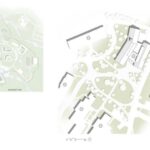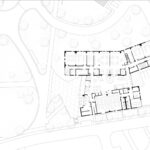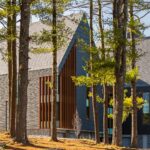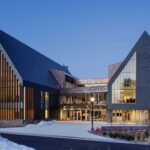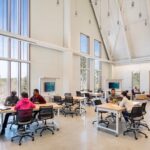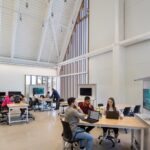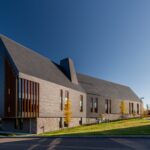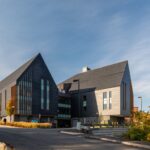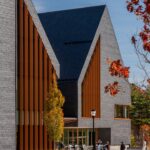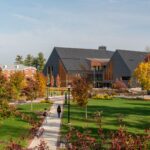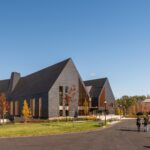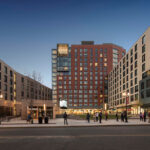The Innovation and Design Education Building (IDE) at Southern New Hampshire University (SNHU) stands as a beacon of creativity and collaboration, providing students with a dynamic environment to explore, create, and mentor one another. Spanning 67,000 square feet, IDE is dedicated to STEM (Science, Technology, Engineering, and Mathematics) education, embodying SNHU’s commitment to accessible and innovative learning experiences.
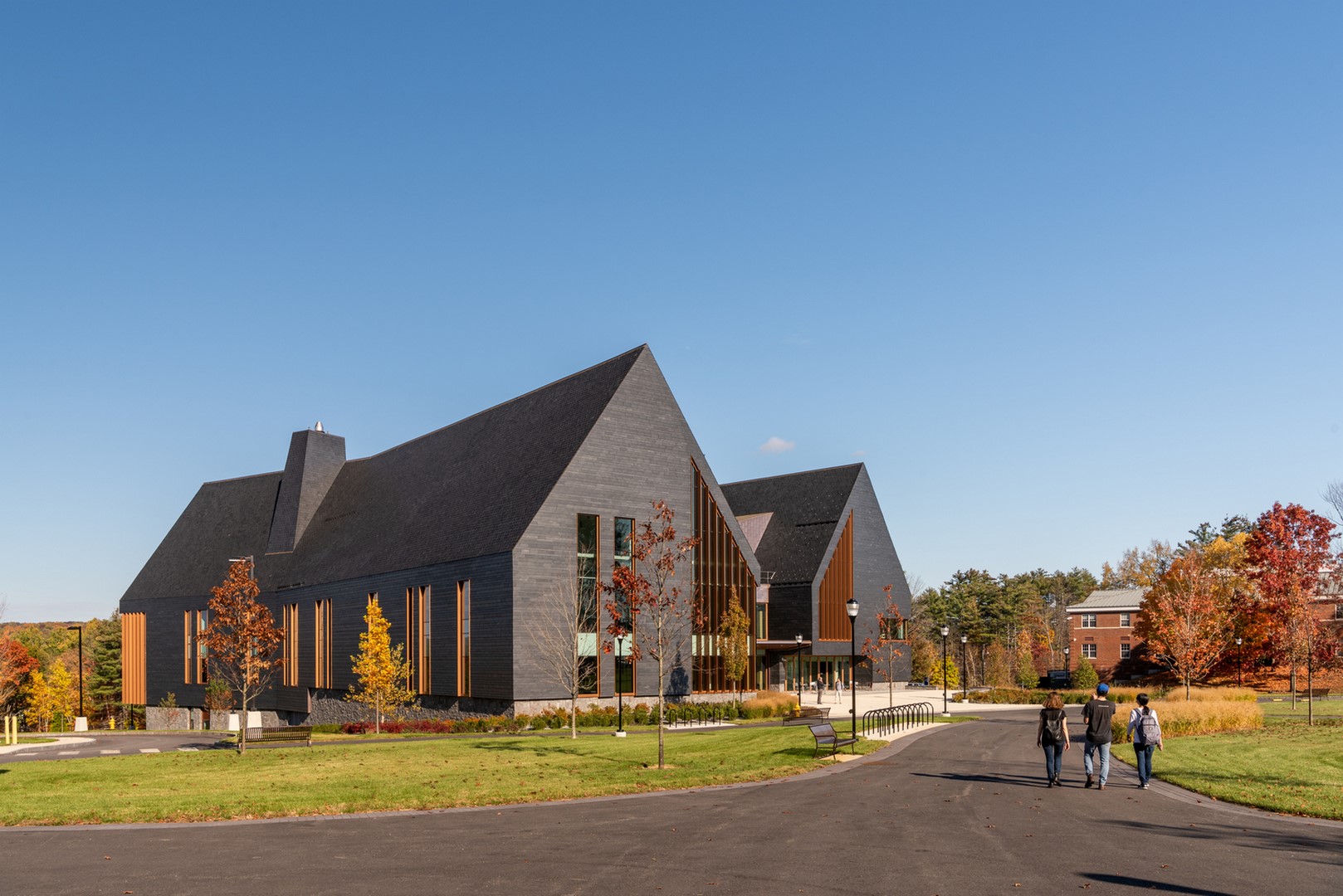
A Hub for Collaborative Learning
IDE embodies SNHU’s mission to democratize STEM education by offering a state-of-the-art facility designed to inspire and empower students. Central to its design are four CDIO hubs (Conceive, Design, Implement, Operate), where students engage in hands-on projects from conception to execution. Complemented by reconfigurable teaching labs, support spaces, classrooms, and offices, IDE fosters an environment of interdisciplinary collaboration and experiential learning.
Architectural Innovation and Tradition
Inspired by the region’s architectural heritage of barns and covered bridges, IDE merges tradition with modernity. Its design features two barn-like volumes connected by a two-story lobby overlooking the Merrimack River, symbolizing connectivity and openness. Traditional materials such as slate, stone, and copper are reimagined to achieve both aesthetic appeal and high-performance functionality, reflecting a commitment to innovation in construction techniques.

Creating Spaces for Connection and Exploration
Inside IDE, traditional exterior materials blend with warm wood tones and inviting communal spaces, fostering a sense of belonging and collaboration. From cozy “living rooms” to industrial-style labs reminiscent of Manchester’s mills, each space is thoughtfully designed to promote creativity and inclusivity. Emphasis is placed on openness and safety, providing students with a supportive environment to explore and innovate.
Sustainable Design for the Future
IDE prioritizes sustainability and occupant wellness through energy-efficient systems and eco-friendly materials. Mechanical systems are optimized for heating, cooling, and ventilation, while LED fixtures and daylight controls minimize energy consumption. With LEEDv4 Silver certification and a 22% reduction in energy consumption compared to code, IDE sets a new standard for environmentally conscious design in educational facilities.
A Model for Education Delivery
From its inception, IDE has been a collaborative effort involving students, faculty, and administration. As education continues to evolve, IDE serves as an incubator for testing innovative teaching methodologies that bridge on-campus and online learning experiences. Through early engagement and ongoing experimentation, IDE embodies SNHU’s commitment to redefining education for the 21st century.




